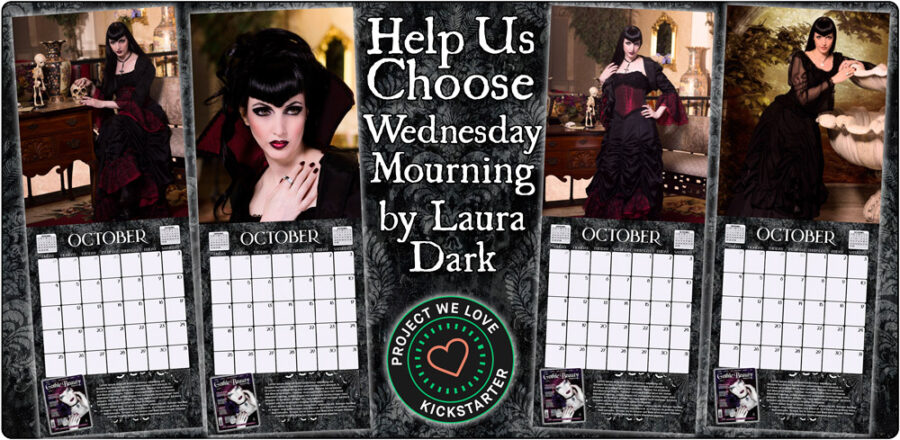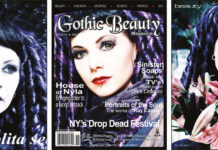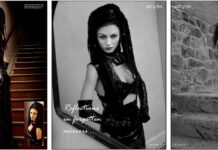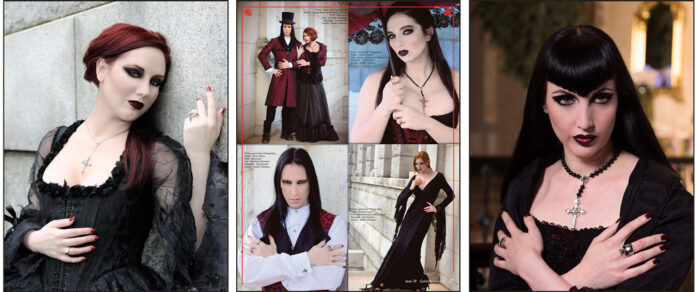
Especially in the alternative space, not all photographers can shoot on assignment, but Laura Dark is a photographer who can really take a concept and elevate it and she did this repeatedly for Gothic Beauty in both fashion editorials and ads. The award-winning Laura Dark is a serious working photographer, located surprisingly in the American MidWest in Ohio. She has photographed thousands of people and has a large private studio she shepherds dozens of photographic subjects through ever single month. She has earned designation as a Certified Professional Photographer and Master of Photography via PPA.
Laura Dark began her photographic journey shooting for her high school’s yearbook with her grandfather’s film camera, a Nikon F from the late 1960s or early 1970s. Having negative physical reactions to darkroom chemicals somewhat delayed her and, like a lot of Gothic Beauty’s contributors, it took her a while to come around to utilizing digital workflows. Laura Dark today mixes modern technology with her influences from alternative culture to Tim Burton with modern techniques and collaborations with The Ohio Canid Center and The Ohio School of Falconry. These days she is best known for her beautiful and fantastical images which transport her subjects to her magical and colorfully pretty world. She says she was really moved when she realized how many regular women who were survivors of cancer, divorce, the pressures of life, and more, came to her to feel beautiful and transported and empowered via the creation of special images. 
Clothing and accessory designers Laura Dark photographed for Gothic Beauty Magazine include Dark Spectre, Atelier Gothique, Kreepsville, Demonia, Synthetic Rebellion, James Sparx & Mace, and Futurstate. Models she collaborated with for Gothic Beauty included Xlcr Moon, James Mace, Shantia Veney, Odette Despairr, Brianne Jeanette, Seraphina Black, Laura Stewart, and of course Angela Ryan and Wednesday Mourning. We are thinking of including one of her photos created with Wednesday Mourning and one of her photos created with Angel Ryan in the retrospective calendar currently funding on Kickstarter. If you pledge the Gothic Beauty Kickstarter project, you can help curate which images we publish. I am very excited about getting to interview such icons of our community. Excerpts of this interview series will be included in the Gothic Beauty 25 Year Reunion of Original Artists – Calendar Project, but I wanted to share the full-length interviews as well.
BTS: How did these particular shoots for Gothic Beauty Magazine 39 (Angela Ryan in Dark Spectre and Atelier Gothique) and Gothic Beauty Magazine 43 (Wednesday Mourning) come together and what was the shoot day like? Anything you’d like to share about the location, how the collaboration went, what it was like working with your collaborators, anything extra you had to do to make the shoot happen? What was the post-processing like and has your process changed/evolved since then?
Gothic Beauty Magazine 39, featuring Angela Ryan (“Dark Spectre Custom Couture” and “Atelier Gothique”), was one of my favorite shoots from that period. Both brands defined luxury gothic fashion in their own way. Atelier Gothique specialized in opulent jewelry crafted from unique stones and alloys, while Dark Spectre Custom Couture, based in Florida, created bespoke gothic ball gowns and high haute couture pieces that were truly wearable art.
We photographed Angela’s set at Greenlawn Abbey in Columbus, Ohio, a historic mausoleum with incredible marble architecture and ambient natural light filtering through the old estate trees. It was the perfect Gothic cathedral setting. Angela was, as always, a powerhouse in front of the camera. She embodied the regal, dark glamour of those designs effortlessly.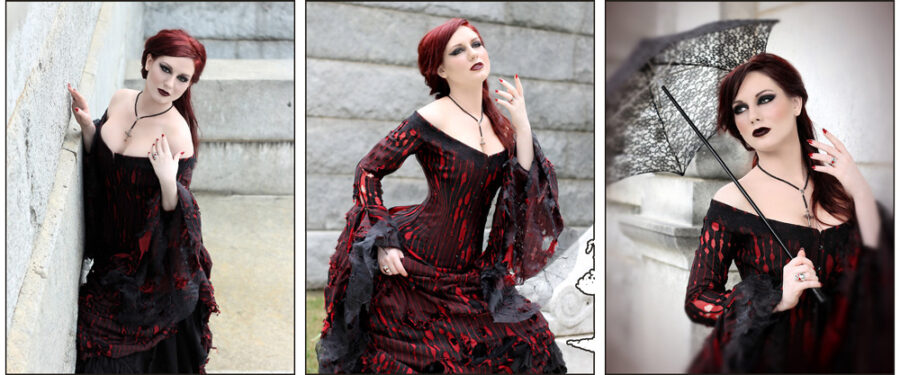
The Gothic Beauty Magazine 43 session with Wednesday Mourning took place at the historic Leland Hotel in Detroit, Michigan. The location had that perfect faded grandeur, with tall windows, worn velvet textures, and the kind of atmosphere that feels haunted by elegance. Wednesday brought a quiet, ethereal intensity that paired beautifully with the environment.
At that time, I was still balancing analog instincts with early digital workflows, layering everything by hand in post. My process has evolved so much since then. Today I lean more into cinematic narrative building and painterly retouching, but those early works still hold a special place because they were so raw, atmospheric, and collaborative.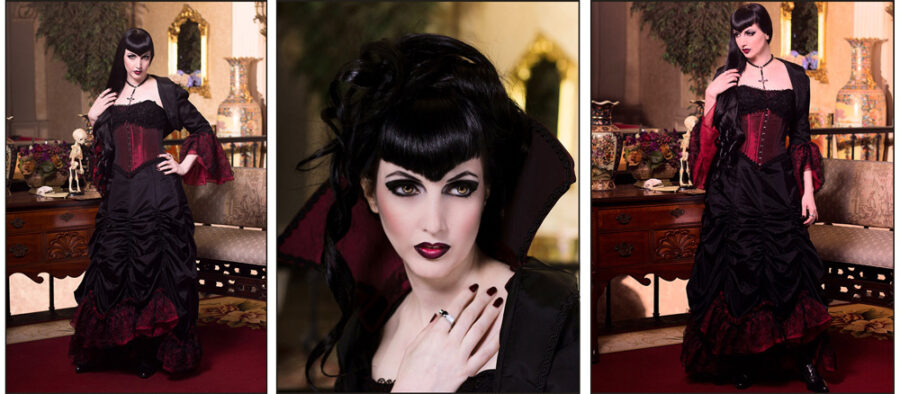
Given that your work helped define the 2000’s gothic aesthetic, what are your thoughts on the ways the culture and its art have evolved?
It’s been fascinating to watch the Gothic aesthetic evolve from a subculture to a visual language. In the 2000s, it was bold and defiant. You wore black because it meant something. Now it’s more celebrated, refined, and often woven into high fashion, conceptual art, and fantasy imagery. I love seeing new generations reinterpret those timeless themes of beauty, darkness, and strength in their own ways. What we were doing then helped pave the way for that acceptance, showing that darkness could be lovely, not just rebellious.
Obviously your work from this time period is iconic, but, from your perspective, where were you at in your career at the time?
Those shoots occurred right as I was discovering my visual identity, merging my love of Gothic romanticism with the fine art and fashion influences that still define my work today. Being published in Gothic Beauty connected me to the international Gothic and alternative fashion scene, and helped me realize that my obsession with light, texture, and dark elegance had a genuine audience.
www.lauradark.net
Instagram: @lauradarkphoto
Facebook: lauradarkphotography
TikTok: @lauradarkphoto
The Gothic Beauty reunion retrospective Project is on Kickstarter until December 11.

